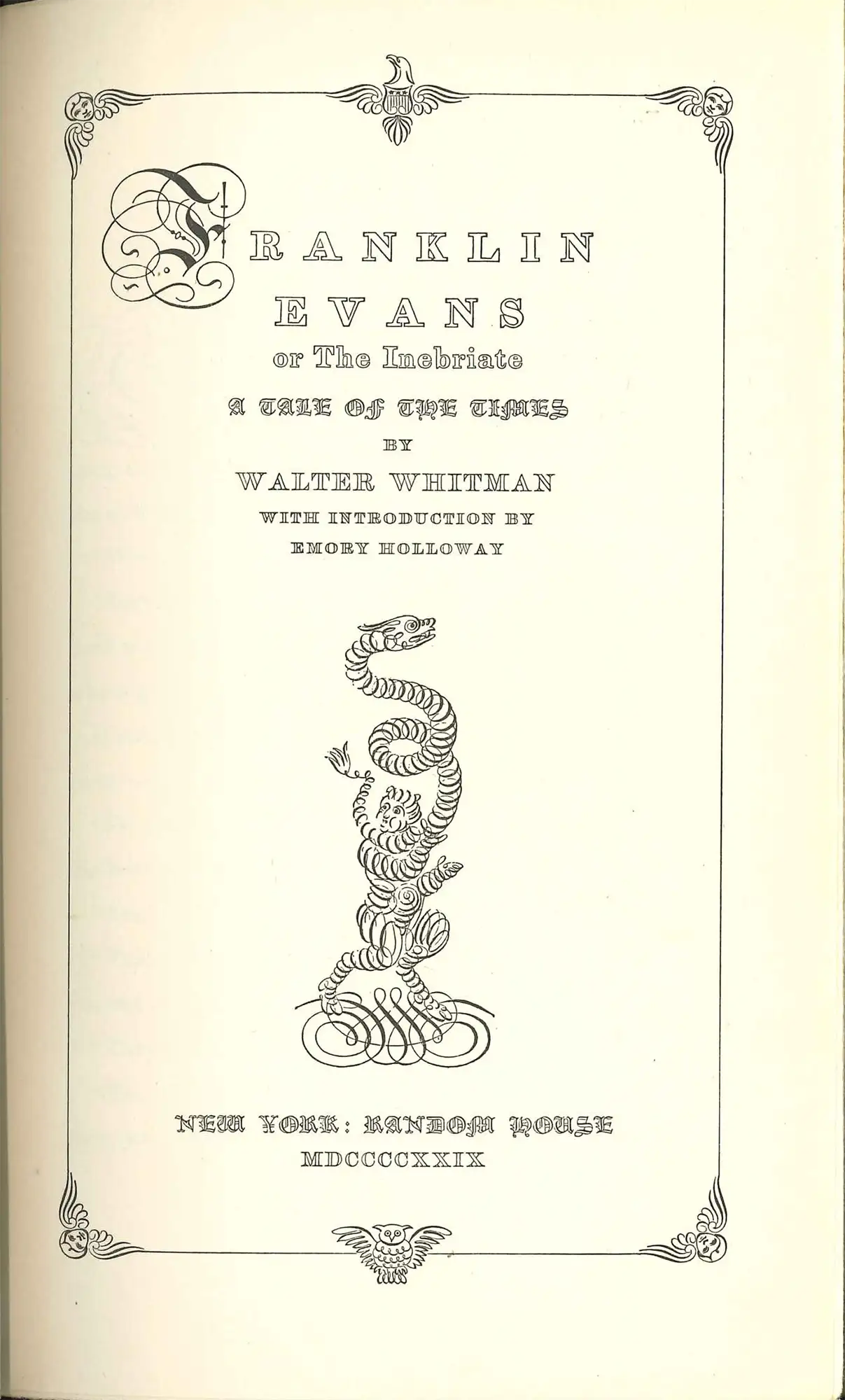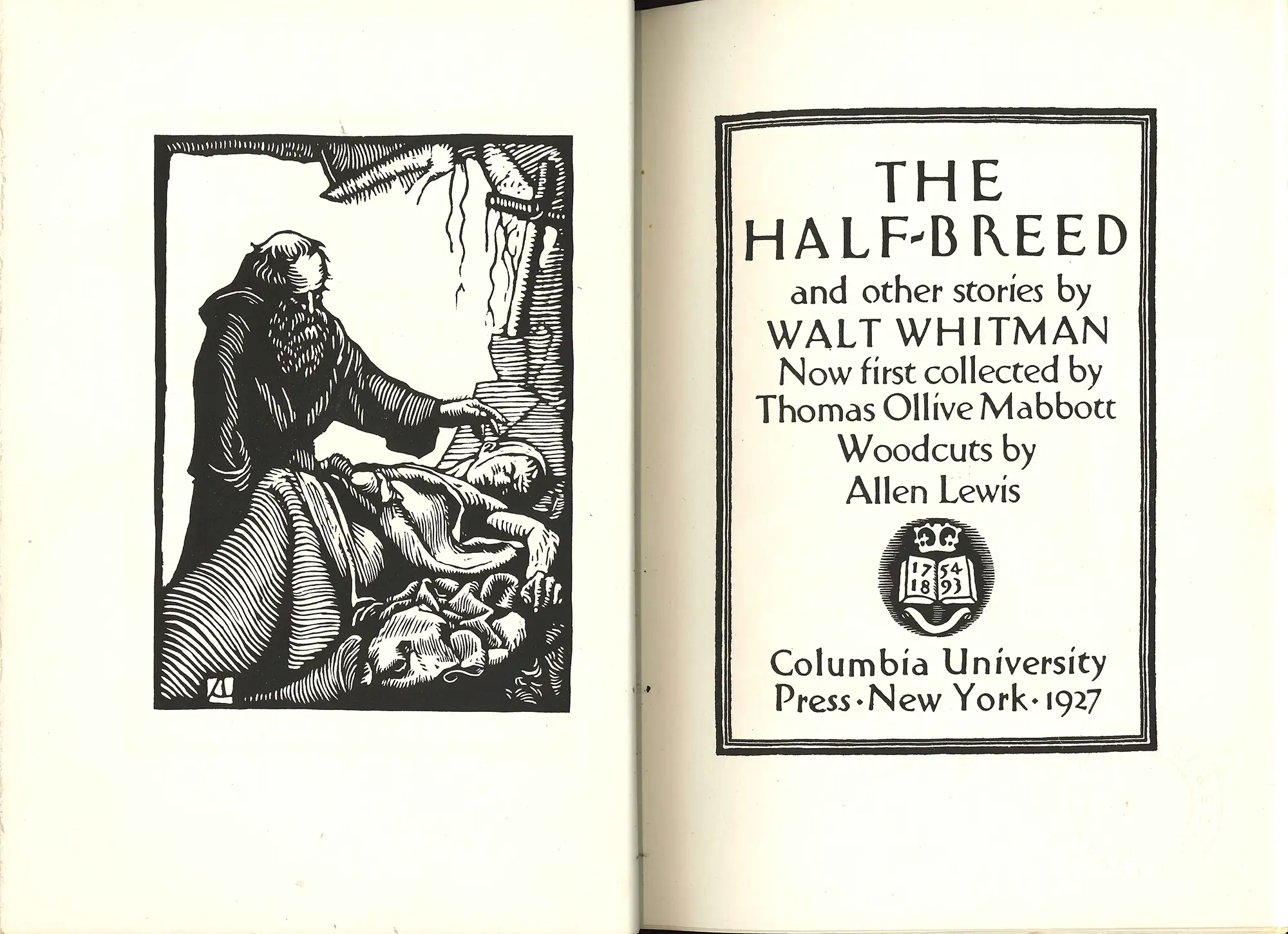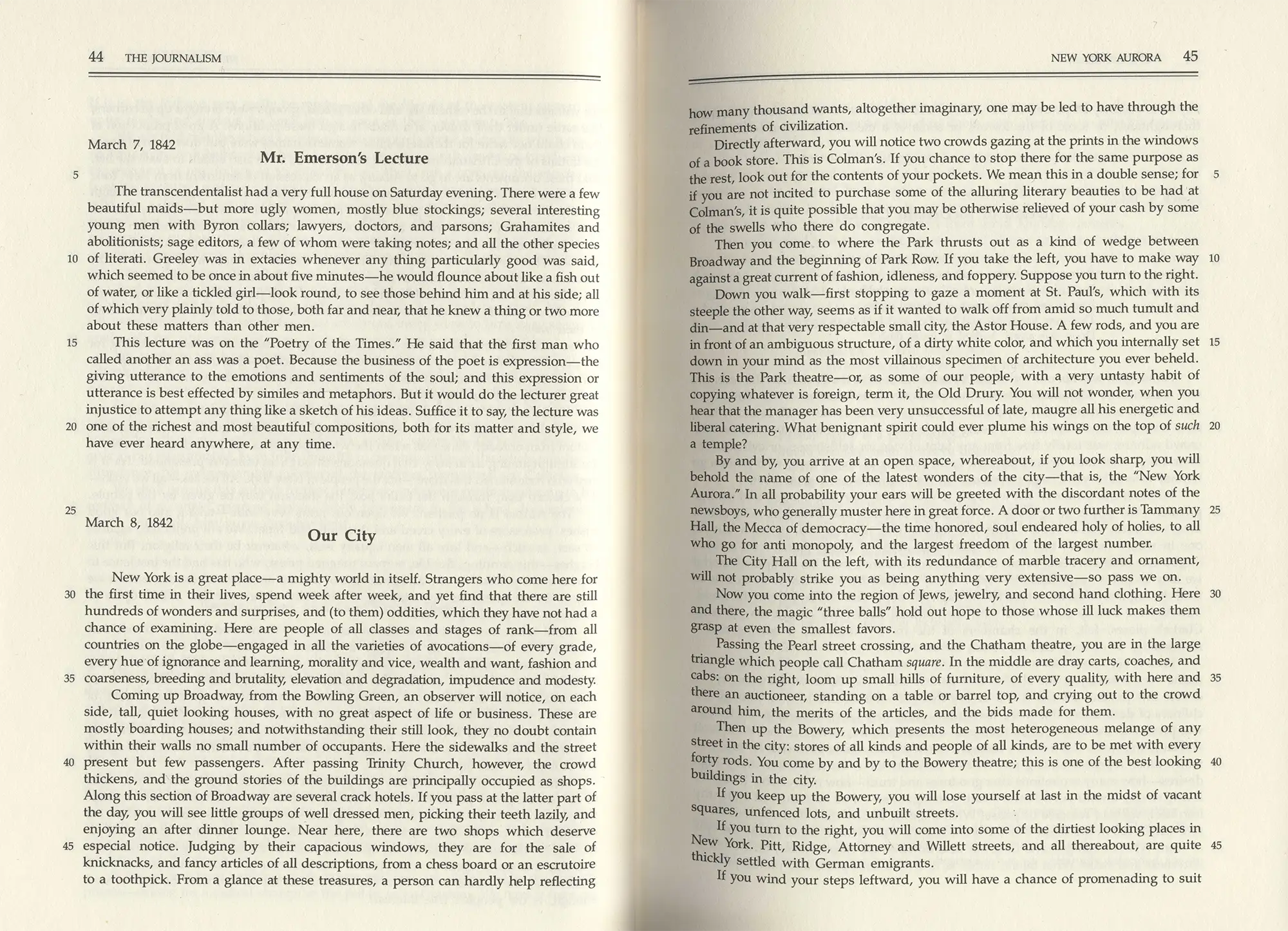Case 5
- Early Prose

Walt Whitman. Franklin Evans, or, The Inebriate: A Tale of the Times. New York: Random House, 1929.
The Washingtonian temperance movement which arose in the early 1840s had a formative influence on Whitman, who wrote several temperance works as a young journalist. The longest was Franklin Evans, which depicts the devastating impact of alcohol on family life via four different plots. First issued in a cheap pamphlet format in 1842, it was the most popular work written by Whitman during his lifetime.
In old age Whitman rejected the novel, claiming he wrote it in three days while drunk. Yet Whitman witnessed the damaging effects of excessive drinking in his brother Andrew and possibly his father Walter. Temperance was a rich source of imagery for Whitman’s verse, in which drunkards were associated with unwholesome things.

Walt Whitman. Franklin Evans, or, The Inebriate: A Tale of the Times. New York: Random House, 1929.
Open image in new window

Walt Whitman. ‘Richard Parker’s Widow’ in: The Half-Breed and Other Stories. New York: Columbia University Press, 1927.
Aware of the growing popularity of sensational literature, Whitman, as a young journalist, wrote sensational stories and poems for newspapers. Among them was ‘Richard Parker’s widow’ (1845), in which a maddened woman disinters her executed husband’s coffin and embraces the corpse.
As a young newspaper editor, Whitman sometimes catered to public tastes by writing lurid accounts of crimes and accidents. He came to recognise the limitations of such narratives, viewing them as having little literary or moral value.

Walt Whitman. ‘Richard Parker’s Widow’ in: The Half-Breed and Other Stories. New York: Columbia University Press, 1927.
Open image in new window

Walt Whitman. The Journalism. Volume I, 1834-1846. New York: Peter Lang, 1998.
Prior to becoming a famed poet, Whitman spent two decades immersed in journalism on Long Island, in Brooklyn and New York City. By 1855, he had edited eight newspapers, co-edited one, helped edit another, and contributed to more than twenty journals.
As many Whitman scholars have observed, it is impossible to understand the development and scope of Leaves of Grass without understanding Whitman’s editorial and journalistic experiences. Displayed are two examples from the New York Aurora.


